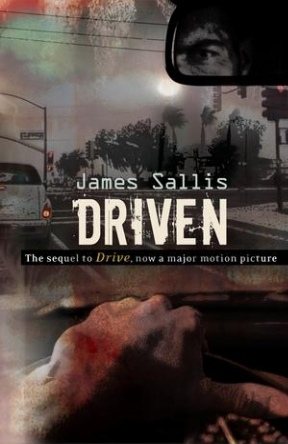By Jeremy Hannaford (Contributor) – Email
Print Edition: June 20, 2012
 “Life is like a thesaurus. One third of it is an index. That’s how people live; they are just trying to find out what the other two thirds are.” This is the writing style of Driven, the sequel to the novel-turned-popular-film Drive.
“Life is like a thesaurus. One third of it is an index. That’s how people live; they are just trying to find out what the other two thirds are.” This is the writing style of Driven, the sequel to the novel-turned-popular-film Drive.
Going in a much more linear fashion than the non-linear style of the predecessor, Driven takes place seven years after the first novel in which Driver has given up his previous life to become an honest working man named Paul West. But when his fiancé is murdered in an attempt on his life, he is forced to re-emerge as Driver and hunt down those responsible. James Sallis has an interesting take on neo-noir, blending story, character and, at times, poetry into the novel as it reflects on the ever-lingering questions of what we are meant to do with our lives.
James Sallis is a very different author from most current-day writers. Divert your attention from the words for even a moment and you will have already lost where the story is going. Driven isn’t a simple story of revenge. It delves into how people view each other and how some people who live in the past refuse to accept the world around them and, in some cases, are lost within themselves. The story takes place in the city of Phoenix, Sallis’s hometown and place of interest for most of his works. Throughout the novel, he describes the aged and abandoned buildings with something of a fallen beauty; every place has a story, and much like the characters themselves, it never truly knows what it wants to be.
While it is an entertaining novel, the point about constant attention is not to be taken lightly. Sallis wants the reader to build the image in their minds by giving them brash details of the characters and their actions. At times, it is left for the reader to fill in what might have just happened as things are only implied in the novel. This can be very frustrating but it also opens to a different view of writing.
Sallis embraces the noir genre with a violent yet poetic take. What he looks to have left out is actually his invitation to allow the reader to visualize the scene in their own minds. Sallis uses emotions to create the actions and the characters but leaves the reader to divulge them. As I said, a different kind of writer.
As mentioned, this is a sequel to the previous novel, not the film, so some characters reappear. Manny, the script writer who Driver befriended in Drive, is one of the most interesting characters I’ve ever read in a novel. He writes scripts for films that he knows will be junk, yet he still creates them. He always notices the reoccurring sayings and mottos and always asks what they really mean. He is a narcissist who is always willing to indulge himself deeper into what everything means and why we do what we do.
A very short read yet an engaging one, Driven is for any who enjoy noir, fast cars and the questions of life itself.

